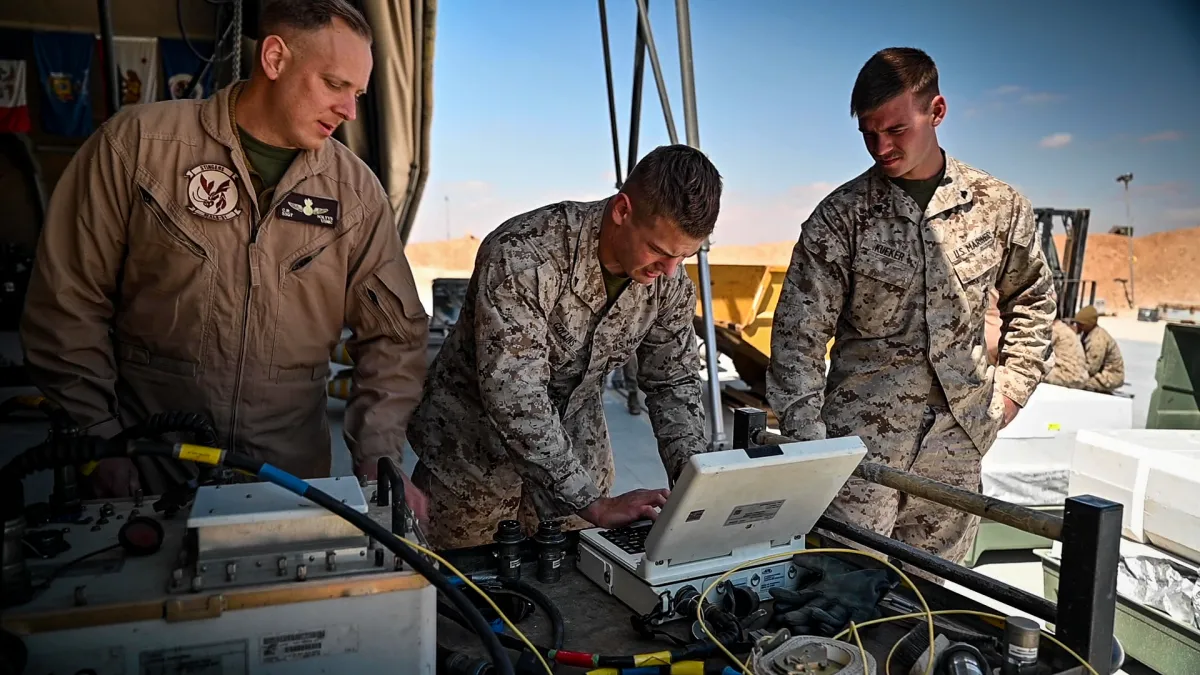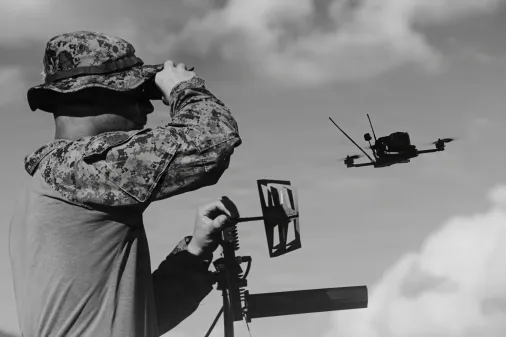Marine Corps developing a follow-on publication to last year’s information doctrine

SAN DIEGO, Calif. — Following a first publication to enshrine information as official doctrine, the Marine Corps is looking at a follow-on document that gets into the practical application of information as a warfighting function.
Last June, the Corps published Marine Corps Doctrinal Publication-8, Information (MCDP-8), which sought to describe the purpose and mechanics of information as a warfighting function for the entire service. Now, it is in the process of developing a new document, titled Marine Corps Warfighting Publication 8-10.
The new publication is meant to follow “on the MCDP-8 momentum to continue this discussion and help the [Marine Expeditionary Force] commanders and regimental commanders, division commanders, company commanders, squadron commanders, etc., on how we’re going to best use information,” Lt. Gen. Matthew Glavy, deputy commandant for information, told DefenseScoop in an interview at the WEST 2023 conference in San Diego.
MCWP 8-10 is more of a cognitive discussion that breaks away from the lexicon into what information is and isn’t, Glavy said.
“The Marine Corps Warfighting Publication 8-10, now gets into the practical application phase, building on what MCDP-8 was going to do,” he said, adding it’s “the more theoretical into, ‘OK how are we going to do this? How are we going to execute planning according to this information warfighting function and how do we turn it into outcomes?’”
While the force is actually in operations, Glavy said it is looking to pull lessons from the real world and document lateral integration of best practices.
In an extremely dynamic environment such as information, Glavy noted that the commandant called for the document to be living, as concepts change to adapt and keep up, explaining they need a baseline. MCWP 8-10 is that baseline.
He said the Marine Corps is aiming for it to be published sometime in the early summer.
Since the initial MCDP-8 was published, Glavy said the Corps has been on an education campaign around the force going to all the MEFs, Marine Forces commands and others to do in-person briefings with all the staff and professional military education personnel.
Veterans of the information-related disciplines have been highly critical of the Department of Defense as a whole since the conclusion of the Cold War, claiming the department has neglected and even atrophied its information warfare prowess. Despite recent pushes – to include a revision to Joint Publication 3-04, Information in Joint Operations – some are still concerned about the emphasis and degree to which information will be integrated into operations despite being termed the seventh warfighting function in 2017.
The Marine Corps has been at the forefront of the information space, according to sources. Prior to a joint lexicon being more thoroughly fleshed out, the Corps came up with its own doctrinal term dubbed “operations in the information environment,” or OIE.
Now, with the Joint Staff catching up, the Marine Corps signed a memo in January, doing away with the term OIE and instead adopting “information warfighting function.”
“We’ve evolved, for lack of a better term. Information environment is a good term, we like that term. The joint world’s going to define it more and more, we’ll have to pay attention, use it according to the joint terminology,” Glavy said. “We stepped back and said we’re going to use the joint term — they got a document, they’re the higher headquarters, we’re going to use the joint defined term and we’re going to now focus on this idea of information as a warfighting function.”
Glavy said the notion of information as a warfighting function is the baseline along with the joint publication and that’s how the Corps is proceeding.
The Corps is continuing to build annual force design efforts in that direction. One such effort is building signals intelligence, electronic warfare and cyber teams.
The notion behind these teams is they’ll contribute to that stand-in force mentality the Marine Corps provides to the joint force, which essentially means they are stationed forward close to the enemy at all times to gain intimate knowledge of capabilities and environmental aspects and get a jump on operations, should they need to. The concept is also part of the larger paradigm of competing with adversaries on a day-to-day basis below the threshold of armed conflict.
“The ground combat element, our infantry companies and battalions, they’ve seen the need for this and being able to create capabilities that can be pushed down to that level to be used accordingly,” Glavy said of the SIGINT/EW/cyber teams. “The whole idea of the stand-in forces is dispersed forces throughout various places. Can be anywhere from the first island chain to across any other [combatant command]. But having the ability to sense and make sense, having the right capabilities, authorities, tradecraft forward in unique places, these teams provide that all the way down to the company, infantry company level.”
The continued build-out of the MEF Information Groups, or MIGs, is also part of how the Corps is proceeding in the information sphere. Created in 2017, these tailorable organizations support each MEF within the Corps and integrate electronic warfare with intelligence, communications, military information support operations, space, cyber and communication strategy to provide MEF commanders with an information advantage.
As part of continuing to build these forces, Glavy said they’re still working on meeting requirements for manpower as well as organizing, training and equipping.
The Corps is already playing a big role in deterrence and campaigning, Glavy said, a key pillar in the recently released National Defense Strategy, which emphasizes the importance of integrating more tightly and consistently with partners and allies by exercising.
Within the MIGs, the Corps is working on a concept of what it calls multi-domain effects teams. These teams came about as part of how MEF commanders organize their teams and deploy capabilities from the MIG.
“We got more of a journey on how all that operationalizing is going to go and how the MEF commander is going to project power, so to speak, from an information warfighting function, and those multidomain effects teams are certainly part of that,” Glavy said. “Then there’ll be more of a reconciliation as we determine what is going to be the service position as we get closer to force design coming to be and what is going to be the enduring way we want to do this.”
The I Marine Expeditionary Force has been successful in experimenting with this concept to date.
“One of the things that we’ve been working on in the past year … is multi-domain effects teams. Long gone are the times where we’ve had very discreet and functionally oriented collection teams and operational elements that can put effects into the battlespace,” Col. Kevin Root, commander of I MEF Information Group, said at the same conference. “Now we’re looking at putting multi-domain effects teams out there, which come from these subordinate battalions. But now they’re task-organized and purpose-built to provide capability — both collections and effects — across the battlespace.”






